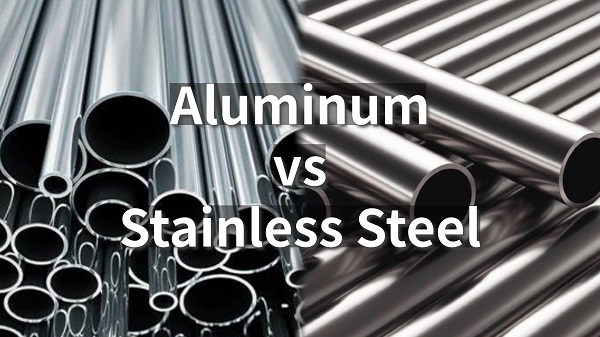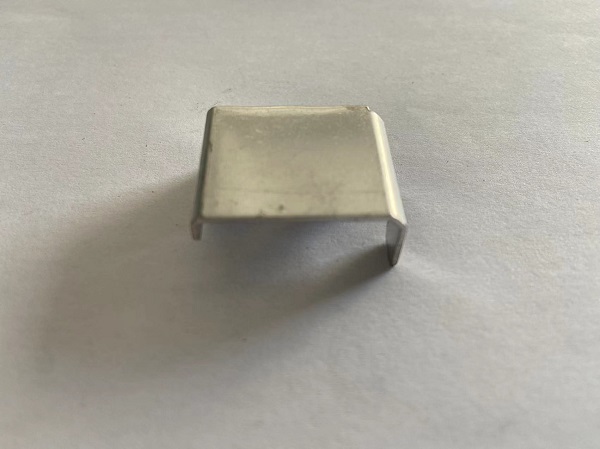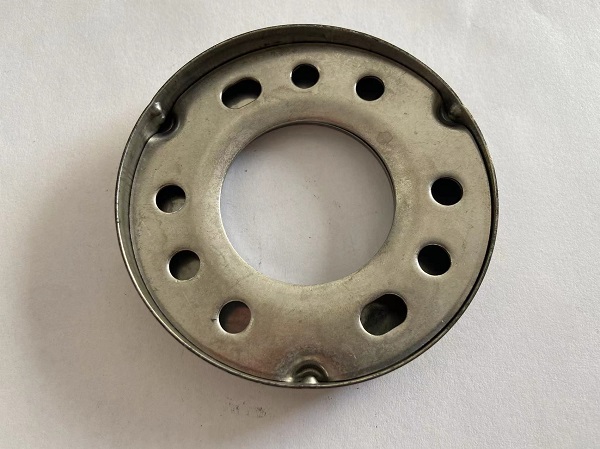Choosing the right material is a cornerstone of successful product design. Among the most popular choices, the aluminum vs stainless steel debate is a frequent topic for engineers and designers. Both metals offer unique advantages, but selecting the wrong one can impact performance, longevity, and cost. Which material is best for my part? This ultimate metal material selection guide will provide a deep, data-driven comparison to help you make an informed decision for your next project.

At a Glance: Quick Comparison Table
For those who need a quick answer, here's a brief overview of how these two metals stack up across key categories:
Feature | Aluminum | Stainless Steel | Winner |
Strength-to-Weight Ratio | Excellent | Good | Aluminum |
Absolute Strength | Good | Excellent | Stainless Steel |
Corrosion Resistance | Very Good | Excellent | Stainless Steel |
Thermal Conductivity | Excellent | Poor | Aluminum |
Cost | Lower | Higher | Aluminum (Generally) |
Machinability | Excellent | Fair | Aluminum |
Factor 1: Strength-to-Weight Ratio
One of the most significant differences between these materials is their relationship between strength and weight. Your choice here often depends on whether your priority is raw power or lightweight efficiency.
Stainless Steel: The Powerhouse of Strength
Stainless steel is significantly stronger and heavier than aluminum. With a density of around 8 g/cm³, it is roughly three times denser. This makes stainless steel components the ideal choice for applications requiring high durability, impact resistance, and structural integrity, such as industrial brackets or heavy-duty fixtures.
Aluminum: The Champion of Lightweight Design
Aluminum, with a density of about 2.7 g/cm³, offers an exceptional strength-to-weight ratio. While not as strong as steel in absolute terms, it provides impressive strength for its low weight. This makes it perfect for industries like aerospace, automotive, and electronics, where reducing weight is critical for performance and efficiency.
Factor 2: Corrosion Resistance in Different Environments
Both metals are known for their ability to resist corrosion, but they achieve it in different ways and excel in different environments.
How Stainless Steel's Chromium Layer Fights Rust
The excellent corrosion resistance of stainless steel comes from its chromium content (typically 10.5% or more). The chromium forms a passive, invisible, and self-healing oxide layer on the surface. This layer protects the iron content from rusting, making it highly suitable for bathroom fixtures and medical instruments.
Aluminum's Natural Protective Oxide Layer
Aluminum also forms a natural protective oxide layer very quickly when exposed to air. This layer is highly resistant to oxidation, which is why aluminum doesn't "rust" in the traditional sense. It performs exceptionally well in many environments but can be susceptible to corrosion from high-alkaline or high-acidic substances.
Factor 3: Thermal Conductivity - A Critical Choice for Heat Management
How a material manages heat is a crucial factor in many applications, especially in electronics. The difference in thermal conductivity between aluminum and stainless steel is vast and often dictates their use.
Why Aluminum is the Go-To Material for Heat Sinks
Aluminum is an excellent thermal conductor. It transfers heat quickly and efficiently, making it the industry standard for heat sinks and LED light components. If your product generates heat that needs to be dissipated, custom aluminum parts are almost always the right answer. Explore our solutions for thermal management.

When Stainless Steel's Low Conductivity is an Advantage
Conversely, stainless steel is a poor heat conductor. This property can be an advantage in applications where heat needs to be contained or insulated. For example, it's used in firewall applications or for handles on cookware.
Factor 4: Cost Analysis - Material Price vs. Machining Costs
What is the cost of aluminum vs stainless steel? The answer is multi-faceted, involving both the price of the raw material and the cost of processing it. A full cost analysis is essential for any project budget.
Comparing the Raw Material Costs
Generally, on a per-kilogram basis, aluminum tends to be less expensive than stainless steel. The raw material costs can fluctuate with market conditions, but aluminum often presents a more budget-friendly starting point for materials.
How Machinability Affects the Final Part Price
Machinability plays a huge role in the final cost. Aluminum is much softer and easier to cut, stamp, and form. This means manufacturing stamping aluminum parts requires less energy, causes less tool wear, and can be done faster, significantly reducing labor and machining costs. This can often make the total cost of a finished aluminum part lower than a stainless steel one, even if the raw material price gap narrows.

Application Showdown: Where Each Metal Shines
The best way to choose is to see where these materials are typically used. Our experience at Pengce Metal shows clear patterns.
Choose Custom Aluminum Parts for: LED Lighting, Electronics, Automotive
Aluminum is the preferred choice when weight, heat dissipation, and cost are primary concerns. We frequently manufacture custom aluminum parts for:
- LED light housings and heat sinks
- Electronic enclosures and chassis
- Lightweight automotive components and brackets
Choose Stainless Steel Components for: Bathroom Fixtures, Medical Devices, Food Processing
Stainless steel is selected for its superior strength, hardness, and corrosion resistance, especially in hygienic or harsh environments. We produce stainless steel components for:

- Durable and clean bathroom fixtures and floor drains
- Surgical and medical instruments
- Food-grade processing equipment and cutlery
Making the Right Choice: It All Depends on Your Application
As we've seen, there is no single "best" material in the aluminum vs stainless steel debate. The optimal choice depends entirely on your specific application's requirements for strength, weight, environment, thermal performance, and budget. By carefully weighing these factors, you can select the material that delivers the best performance and value for your product. Which material have you chosen for your past projects and why? Share your experience in the comments!
Your Metal Material Selection Questions Answered
Can aluminum be as strong as steel? While standard aluminum alloys are not as strong as stainless steel, certain high-strength aluminum alloys (like 7075) can rival the strength of some mid-grade steels. However, for most stamping applications, stainless steel offers superior absolute strength.
Is stainless steel magnetic? It depends on the type. Austenitic stainless steels (like 304 and 316), which are the most common, are generally non-magnetic. Ferritic and martensitic stainless steels, however, are magnetic.
Which material is easier to stamp and form? Aluminum is significantly easier to stamp, bend, and form due to its lower hardness and higher ductility. This excellent machinability often results in lower tooling costs and faster production cycles, making it a very popular choice for complex stamped parts.
How do I get a quote for both custom aluminum parts and stainless steel components? That's easy. Simply prepare your design files and specifications, and our team can provide a comparative quote for both materials. This allows you to make a final decision based on real-world cost data for your specific part. To get started, submit your RFQ to Pengce Metal today.




